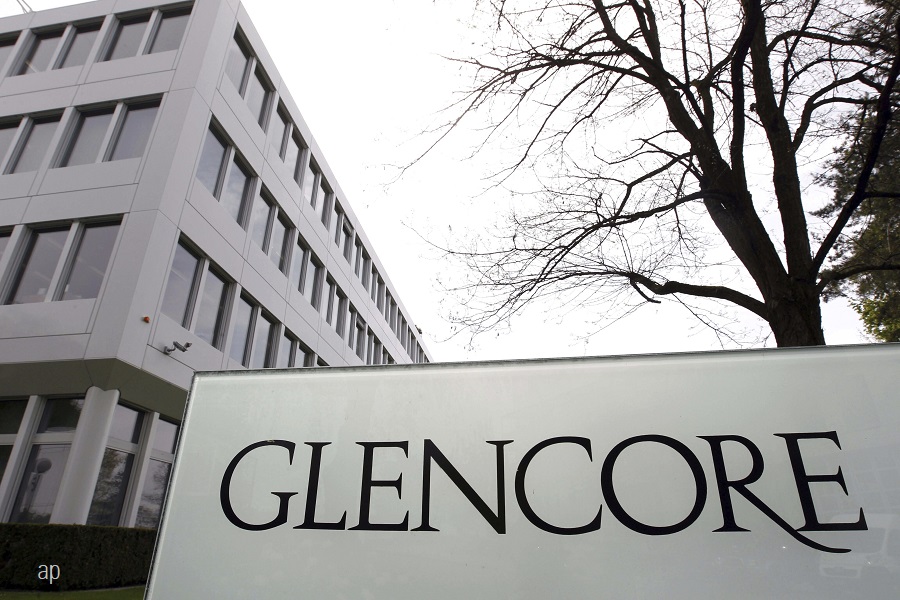
Stock investors suffered last month as financial shares weighed on global indices worldwide. And Canadian shareholders were hit particularly hard – leaving more upside for buyers.
In the two weeks following the banking crisis last month, Canada’s Big Six banks lost approximately $57 billion combined in market capitalization and their share prices dropped significantly. The overall share market in Canada took a dive as a result, with the Morningstar Canada Index losing 4.63% between March 3 and March 17. The broader Morningstar Developed Markets Index, which encompasses stocks across all developed economies, lost 1.64% in the same period. While most of the losses incurred by Canadian firms have since been regained, and stocks across the country continue to rally, Canada’s recovery has still lagged behind peers.
The stock market struggles are good news for Canadian investors looking to add more domestic stocks. Various companies from a wide range of sectors and provinces currently offer shares for attractive prices. While analysts and advisors are quick to caution investors on the risk of domestic overexposure, investing locally also has some advantages. First of all, as Morningstar’s Ian Tam, CFA, explains, adding securities that trade in your home country decreases the risk of losses due to currency exchange. In other words, your return on investment will depend solely on the price of your underlying holding, and not on any fluctuations in foreign exchange rates. Secondly, the dividends earned on domestic securities are often taxed at a lower rate compared to international securities. Investing locally also offers the benefit of decoupling your portfolio’s performance from global market trends. As economies become increasingly connected, and particularly correlated to US markets, some would argue that the need for geographic diversification has lessened.
Here we’ve highlighted three of the cheapest stocks domiciled in each of Canada’s most populous provinces.
- Canopy Growth Corp
- Ticker: WEED
- Fair Value Estimate: $8.00
- Stock Price: $2.27
- Province: Ontario
“Canopy Growth grows and sells cannabis products primarily in Canada, which accounts for roughly 50% of sales. Non-THC product sales account for about 30%.
We forecast Canadian medical revenue to increase about 3% per year, driven by volume decline of about 2% per year on average as consumers shift to the recreational market offset by higher prices. We forecast recreational revenue to rise roughly 6% per year on average as distribution expands, consumers convert from the black market, and nonconsumers become consumers.
We forecast about 4% average annual revenue growth for Canopy’s international medical business. This includes both volume growth amid widening legalization and higher prices.”
-Strategist Kristoffer Inton
- Lithium Americas Corp
- Ticker: LAC
- Fair Value Estimate: $68.00
- Stock Price: $28.24
- Province: British Columbia
“At current prices, we view Lithium Americas shares as materially undervalued, with the stock trading at less than half of our updated fair value estimate. We continue to view Lithium Americas as our top lithium pick. We think the market is overly bearish on the direction of long-term lithium prices due to the recent decline in spot prices, driven by slowing demand growth in China to begin the year.
As electric vehicle adoption increases, we expect maintained double-digit annual growth for lithium demand. Lithium Americas should benefit as there should be more than enough demand for the company’s three resources to enter production and expand capacity over time.”
-Strategist Seth Goldstein
- Cronos Group Inc
- Ticker: CRON
- Fair Value Estimate: $5.50
- Stock Price: $2.52
- Province: Ontario
“Cronos’ full-year 2022 net revenue after excise taxes and adjusted EBITDA loss of $92 million and $81 million, respectively, weren’t far from our forecast revenue of $93 million and adjusted EBITDA loss of 77 million. 2022 revenue grew by about $18 million, but adjusted EBITDA losses fell (that is, improved) by about $80 million, an impressive feat that reflects the company’s cost efforts.
We forecast net revenue for Cronos' Rest of World segment to grow about 9% per year on average through 2032, mostly due to higher volumes from the international medical business. We forecast U.S. revenue to reach about $3 million in 2032, compared with $5 million in 2022, reflecting the strategic pivot away from CBD beauty products toward adult-use alternative cannabinoids.”
-Strategist Kristoffer Inton
- Bausch & Lomb Corp
- Ticker: BLCO
- Fair Value Estimate: $34.00
- Stock Price: $23.02
- Province: Ontario
“Vision care made up 63% of Bausch & Lomb’s total sales in 2022, and we forecast mid-single-digit long-term growth for the segment. We believe macro drivers, including an aging population, an increasing prevalence of myopia (nearsightedness), and a favorable product mix will all act as tailwinds for the business. The industry has seen an increasing portion of lens wearers upgrade their lenses based on modality (reusable to daily), lens material (non-silicone hydrogel to silicone hydrogel), and lens type (spherical to multifocal or toric). Trade-ups come at higher price tags and higher margins, and we expect Bausch to enjoy these tailwinds.
We assign Bausch & Lomb a narrow moat because we believe the company’s strong brand recognition and technically advanced products (intangibles), and patients’ unlikeness to move to a different product (switching costs) should continue to support economic profits for at least the next 10 years. For fiscal year 2022, vision care, surgical, and ophthalmic pharmaceuticals made up 63%, 19%, and 18% of total sales, respectively.”
-Equity Analyst Keonhee Kim
- West Fraser Timber Co
- Ticker: WFG
- Fair Value Estimate: US$139.00
- Stock Price: US$94.72
- Province: British Columbia
“West Fraser is one of the largest softwood lumber and oriented strand board, or OSB, producers in the world, with significant production capacity in Canada, southeastern United States, and Europe. New construction and remodeling are the main uses of softwood lumber and OSB products in North America. West Fraser is closely tied to the North American market as it accounts for roughly 85% of sales (70% in U.S. and 15% in Canada). As price-takers, West Fraser and its peers see dramatic profit variations depending on the health of housing markets and overall economic conditions.
Our fair value estimate is US$139 per share. We see modest growth and normalizing profitability for West Fraser over our 10-year forecast horizon, with consolidated sales decreasing at a roughly 0.2% compound annual rate and operating margins averaging roughly 12.1% (compared with the 15% 10-year average). West Fraser’s operating margins expanded significantly in 2021 and 2022 because of record-high lumber prices that drove substantial profitability for the firm. We see operating margins normalizing over our forecast as lumber prices pull back from record highs because of a slowdown in housing starts and repair and remodel activity.”
-Equity Analyst Spencer Liberman
- Air Canada
- Ticker: AC
- Fair Value Estimate: US$27.00
- Stock Price: US$18.74
- Province: Québec
“Air Canada is an internationally focused airline. Roughly about 22% of 2019 capacity was utilized for domestic Canadian flights and less than 20% of capacity was for U.S. transborder flights. Air Canada’s strategy before the coronavirus pandemic was to capitalize on so-called sixth freedom traffic, which is flying (mostly) U.S. nationals on long-haul international routes with a layover in a Canadian airport. In our view, Air Canada came into the COVID-19 crisis in better financial shape than many U.S.-based peers, but its internationally focused business model will face considerably more stress than domestically focused U.S. peers.
We expect Air Canada's fundamentals will recover with reduced border restrictions, which are accelerating in 2022. We expect 2022 will be the year that international travel finally resumes in earnest. We anticipate 2022 capacity will be about 73% of 2019 levels and that capacity will continue to grow in 2023 as international travel restrictions ease. Our 2026 capacity is roughly 6% higher than 2019 levels. We expect 2022 load factors will be roughly 80% and that yields will decrease in 2022 due to higher levels of low-yielding international travel in the mix.”
-Sector Director Brian Bernard
- Canfor Corp
- Ticker: CFP
- Fair Value Estimate: US$30.00
- Stock Price: US$20.85
- Province: British Columbia
“Canfor is one of the largest softwood lumber producers in the world, with over 6 billion board feet of production capacity in western Canada, southeastern United States, and Sweden. Homebuilding and remodeling are the main uses of softwood lumber in North America, although Canfor does sell significant volume in Europe and Asia, with both making up roughly 30% of sales in recent years. As price-takers, Canfor and its peers see dramatic profit variations depending on the health of housing markets and overall economic conditions.
We've decreased our fair value estimate to CAD 30 per share from CAD 35 due to lower near-term revenue growth and profitability in our forecast. We see moderate growth and normalizing profitability for Canfor over our 10-year forecast horizon, with consolidated sales growing at a 0.3% compound annual rate and operating margins averaging roughly 7.7% (compared with the 10.1% 10-year average). Canfor’s operating margins expanded significantly in 2021 due to record high lumber prices that drove substantial profitability for the firm. We see operating margins normalizing over our forecast as lumber prices pull back from record highs due to a slowdown in housing starts and repair and remodel spending.”
-Equity Analyst Spencer Liberman
- BRP Inc
- Ticker: DOO
- Fair Value Estimate: US$132.00
- Stock Price: US$98.21
- Province: Québec
“Fiscal 2024 should be another banner year for BRP's sales given resilient consumer demand and some backfill units still needed at its dealers. However, we don't think this will distract the team from its long-term product and operational priorities, which should improve the firm's competitive positioning. BRP's strategic priorities focus on market share growth, lean operations, and cultivating an engaged workforce, all while honing in on evolving customer demands. With manufacturing facilities located near demand (for example, personal watercraft in Mexico) and timely spend to increase facility capacity as needed, BRP should continue to capture efficiencies from its plants.
Firmwide centers of expertise and excellence allow BRP to manufacture optimally, improving utilization and allowing it to bring products to market quickly, ensuring a continually relevant and in-demand product lineup (with electric vehicle offerings in all segments by 2026). Because BRP is exposed to many customer segments, we don’t believe acquisitions are required for expansion. However, we think entry into white-space categories (like motorcycles) and small acquisitions, particularly in parts and accessories or marine, are possible and could support margin improvement.”
-Senior Equity Analyst Jaime M. Katz
- Bank of Montreal
- Ticker: BMO
- Fair Value Estimate: US$144.00
- Stock Price: US$120.08
- Province: Québec
“Bank of Montreal is the fourth-largest bank in Canada and one of six Canadian banks that collectively hold almost 90% of the nation's banking deposits. The bank derives roughly 60% of its revenue from Canada and 30% from the United States. BMO has a well-established Canadian banking presence, an established U.S. retail operation in the Midwest, and growing commercial and capital markets capabilities. It is also the second-largest asset manager among the Canadian banks as well as the second-largest ETF provider in Canada.
With above-average historical operating efficiency, moaty nonbank businesses, and the ability to primarily operate in the favorable Canadian banking environment, BMO is worthy of a narrow moat rating, in our view. We award the bank a narrow moat rating rather than a wide moat rating because of its greater exposure to U.S. banking, which we view as less moaty than the Canadian operations, as well as its less dominant market positions within its own domestic market (where it has gradually lost share over the past decade to the larger Canadian banks).”
-Strategist Eric Compton























